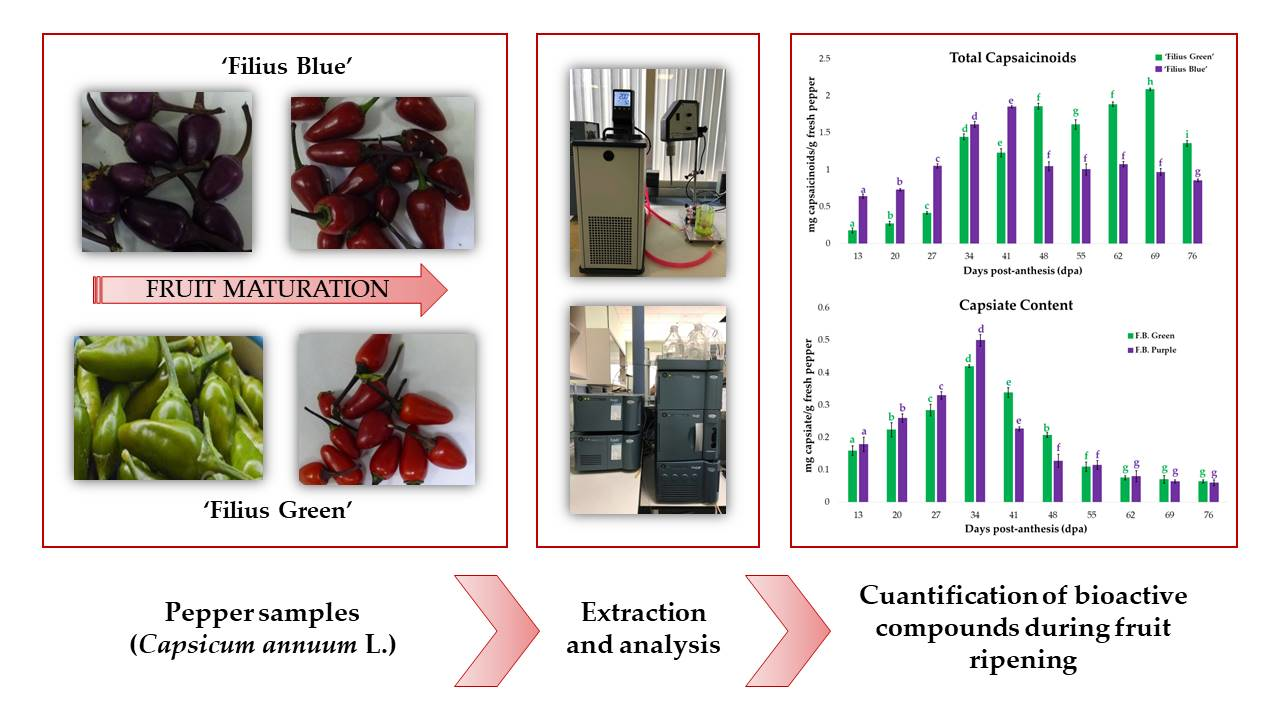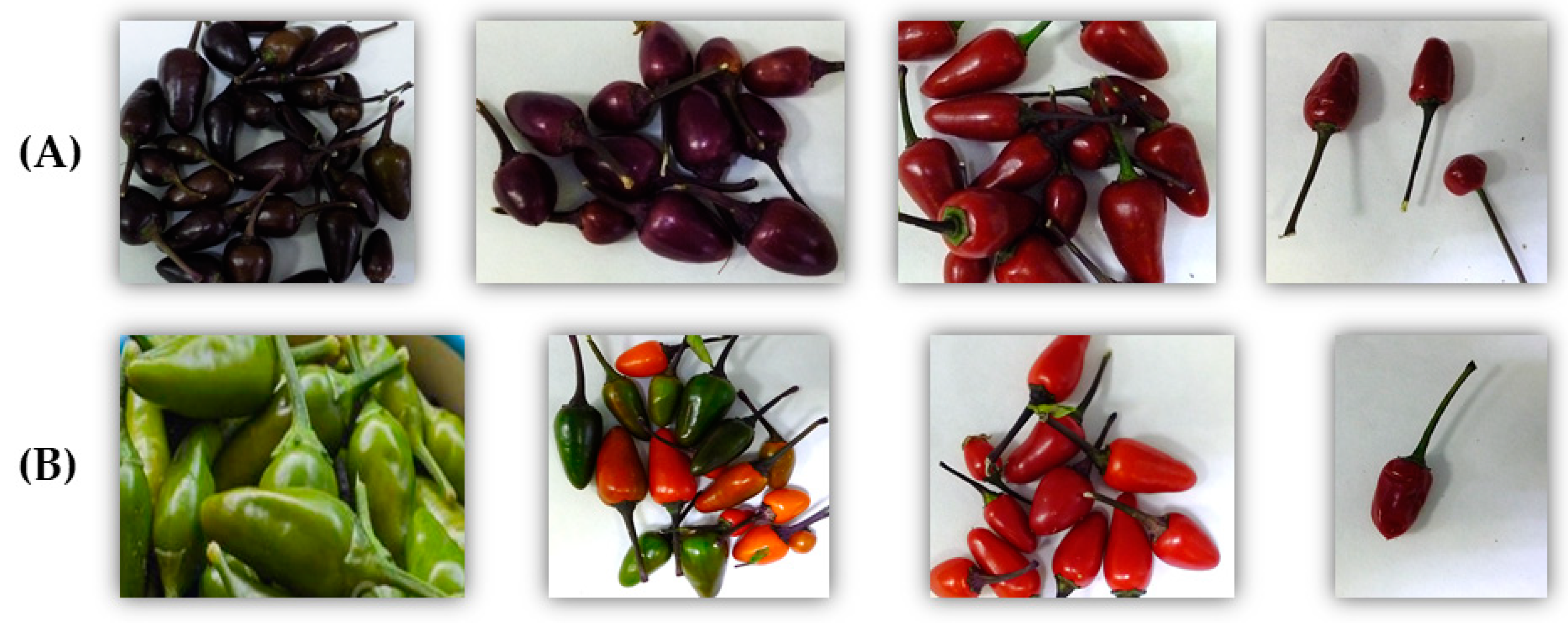Capsaicinoids and capsinoids, which are bioactive compounds of interest, are responsible for the level of pungency of chili peppers, which is one of their most important commercial traits. Both capsaicinoids and capsinoids have received great attention from consumers because of their extensive pharmacological and physiological effects, i.e., antitumor, antioxidant, antiobesity, anti-inflammatory, and analgesic.
- capsaicinoid, capsinoid, pepper
1.

Figure 1. Peppers are fruits with wide genetic variability and multiple ways of being consumed that hold a relevant position in the human diet. Nowadays, consumers are interested in new gastronomic experiences provided by pepper cultivars that present new shapes, colors, and flavors while preserving their bioactive compounds, such as their capsaicinoids and capsinoids. However, numerous changes take place during their development that may alter their biological properties.
Therefore, this work evaluates the capsaicinoid and capsiate contents in two traditional varieties of ornamental peppers (“Filius Blue” and “Filius Green’”) during fruit maturation. The aim is to determine the ideal harvesting moment depending on the farmer’s objective (e.g., achieving a specific color, shape, or flavor; achieving the maximum concentrations of bioactive compounds). The capsaicinoid contents followed different patterns in the two varieties analyzed. The “Filius Blue” variety exhibited increasing concentrations of capsaicinoids up to the 41st day post-anthesis (dpa), from which point on this trend was reversed. The concentrations in the “Filius Green” variety increased and decreased several times, reaching maximum concentrations on the 69th dpa. Regarding capsiate contents, both varieties varied in the same way, reaching maximum concentrations on the 34th dpa and then decreasing.

Figure 2. Changes in the color of the fruits in both varieties over their maturation process. (A) Purple variety ‘Filius Blue’; (B) green variety ‘Filius Green’. The images of each variety were taken at 13, 34, 55 and 76 dpa from left-to-right, respectively.
This entry is adapted from the peer-reviewed paper 10.3390/plants9091222
